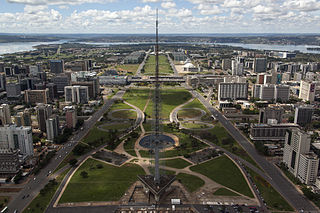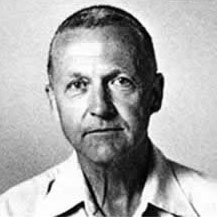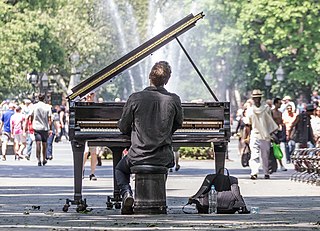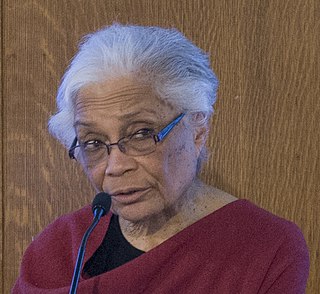Related Research Articles

Urban design is an approach to the design of buildings and the spaces between them that focuses on specific design processes and outcomes. In addition to designing and shaping the physical features of towns, cities, and regional spaces, urban design considers 'bigger picture' issues of economic, social and environmental value and social design. The scope of a project can range from a local street or public space to an entire city and surrounding areas. Urban designers connect the fields of architecture, landscape architecture and urban planning to better organize physical space and community environments.
Environmental psychology is a branch of psychology that explores the relationship between humans and the external world. It examines the way in which the natural environment and our built environments shape us as individuals. Environmental psychology emphasizes how humans change the environment and how the environment changes humans' experiences and behaviors. The field defines the term environment broadly, encompassing natural environments, social settings, built environments, learning environments, and informational environments. According to an article on APA Psychnet, environmental psychology is when a person thinks of a plan, travels to a certain place, and follows through with the plan throughout their behavior.

Kevin Andrew Lynch was an American urban planner and author. He is known for his work on the perceptual form of urban environments and was an early proponent of mental mapping. His most influential books include The Image of the City (1960), a seminal work on the perceptual form of urban environments, and What Time is This Place? (1972), which theorizes how the physical environment captures and refigures temporal processes.

Outdoor education is organized learning that takes place in the outdoors, typically during school camping trips. Outdoor education programs sometimes involve residential or journey wilderness-based experiences in which students participate in a variety of adventurous challenges and outdoor activities such as hiking, climbing, canoeing, ropes courses and group games. Outdoor education draws upon the philosophy, theory, and practices of experiential education and environmental education.
Roger A. Hart is a child-rights academic, and former Professor of Psychology and Geography at the City University of New York and co-director of the Children's Environments Research Group.

Placemaking is a multi-faceted approach to the planning, design and management of public spaces. Placemaking capitalizes on a local community's assets, inspiration, and potential, with the intention of creating public spaces that improve urban vitality and promote people's health, happiness, and well-being. It is political due to the nature of place identity. Placemaking is both a process and a philosophy that makes use of urban design principles. It can be either official and government led, or community driven grassroots tactical urbanism, such as extending sidewalks with chalk, paint, and planters, or open streets events such as Bogotá, Colombia's Ciclovía. Good placemaking makes use of underutilized space to enhance the urban experience at the pedestrian scale to build habits of locals.

Marco Mario Paolo Casagrande is a Finnish architect, environmental artist, architectural theorist, former mercenary, writer and professor of architecture. He graduated from Helsinki University of Technology department of architecture (2001).

Sharon Egretta Sutton, is an American architect, educator, visual artist, and author. Her work is focused on community-based participatory research and design. She is a professor emerita at the University of Washington. In 1984, she became the first African American woman to become a full professor in an accredited architectural degree program while teaching at the University of Michigan. She has also taught at Parsons School of Design, and Columbia University.
New Village Press is a not-for-profit book publisher founded in 2005 in the San Francisco Bay Area now based in New York, New York. It began as a national publishing project of Architects/Designers/Planners for Social Responsibility (ADPSR), an educational non-profit organization founded in 1981.
Cindi Katz, a geographer, is Professor in Environmental Psychology, Earth and Environmental Sciences, American Studies, and Women's Studies at the CUNY Graduate Center. Her work concerns social reproduction and the production of space, place and nature; children and the environment; the consequences of global economic restructuring for everyday life; the privatization of the public environment, the intertwining of memory and history in the geographical imagination, and the intertwined spatialities of homeland and home-based security. She is known for her work on social reproduction and everyday life, research on children's geographies, her intervention on "minor theory", and the notion of counter-topography, which is a means of recognizing the historical and geographical specificities of particular places while inferring their analytic connections to specific material social practices.
Willem James van Vliet was educated at a Queen's University in the Netherlands, graduating in 1970 with an award from the French embassy for achievements in the field of language and literature. In 1976, he received a doctorandus degree ad summos honores in sociology and planning at the Free University of Amsterdam.
Owain Jones FGS is a Professor of Environmental Humanities at Bath Spa University (UK). He was previously Reader in Cultural Geography: Place, Nature and Landscape at the Countryside & Community Research Institute and member of staff of the Department of Geography and Environmental Management, Faculty of Environment and Technology, University of the West of England.
Urban planning education is a practice of teaching and learning urban theory, studies, and professional practices. The interaction between public officials, professional planners and the public involves a continuous education on planning process. Community members often serve on a city planning commission, council or board. As a result, education outreach is effectively an ongoing cycle. Formal education is offered as an academic degree in urban, city, rural, and/or regional planning, and more often awarded as a master's degree specifically accredited by an urban planning association in addition to the university's university-wide primary accreditation, although some universities offer bachelor's degrees and doctoral degrees also accredited in the same fashion; although most bachelor's degrees in urban planning do not have the secondary-layer of urban planning association accreditation required for most positions, relying solely on the university's primary accreditation as a legitimate institution of higher education. At some universities, urban studies, also known as pre-urban planning, is the paraprofessional version of urban and regional planning education, mostly taken as a bachelor's degree prior to taking up post-graduate education in urban planning or as a master's or graduate certificate program for public administration professionals to get an understanding of public policy implications created by urban planning decisions or techniques.

Noel Phyllis Birkby was an American architect, feminist, filmmaker, teacher, and founder of the Women's School of Planning and Architecture.
The Rudy Bruner Award for Urban Excellence (RBA) was established in 1986 by Cambridge, Massachusetts architect Simeon Bruner. The award is named after Simeon Bruner's late father, Rudy Bruner, founder of the Bruner Foundation. According to the Bruner Foundation, the RBA was created to increase understanding of the role of architecture in the urban environment and promote discussion of what constitutes urban excellence. The award seeks to identify and honor places, rather than people, that address economic and social concerns along with urban design.

Place attachment is the emotional bond between person and place, and one way of describing the relationship between people and spatial settings. It is highly influenced by an individual and his or her personal experiences. There is a considerable amount of research dedicated to defining what makes a place "meaningful" enough for place attachment to occur. Schroeder (1991) notably discussed the difference between "meaning" and "preference," defining meaning as "the thoughts, feelings, memories and interpretations evoked by a landscape" and preference as "the degree of liking for one landscape compared to another."
Clare Cooper Marcus is a prominent educator in landscape architecture and architecture and a pioneer in the field of social issues in housing, open space design, and healing landscapes.
Illène Pevec is an American author, journalist, children's activist, and educator who works in developing youth gardens at schools and community centers. Based in Carbondale, Colorado, Pevec serves as the program director for Fat City Farmers, a local food education program in Basalt, Colorado. She is a multinational citizen and has developed youth gardens in all three countries. Pevec authored Growing a Life: Teen Gardeners Harvest Food, Health, and Joy, a book that integrates her work in US community youth gardens with observations from other disciplines to generate a better understanding of the positive effect mentored urban gardening can have on youth development.
Susan Herrington is a Vancouver-based landscape architect. She is a Professor in the School of Architecture and Landscape Architecture (SALA) at The University of British Columbia, Vancouver, Canada, where she teaches in the Landscape Architecture, Environmental Design, and Architecture programs and served as the chair of Landscape Architecture (2016-2020).
Sun-Young Rieh is a Korean architect known for her writing and teachings on educational environments, sustainable architecture, and gender-conscious environments. As she is well versed in both practice and academia, her research strives to integrate with architectural design, particularly in the area of eco-friendly and human-friendly design.[1] She is a professor in the Department of Architecture at the University of Seoul, and has previously been awarded a Fulbright Visiting Scholar grant. She is also a registered architect in both Korea and the United States (NCARB), and she works as a public architect for the City of Seoul. She has served as a board member on multiple key councils for more than a decade, including the Korean Institute of Architects, the Architectural Institute of Korea, the Korea Green Building Council, and the Korea Institute of Female Architects.
References
- ↑ "Faculty—College of Architecture and Planning | College of Architecture and Planning | 2010-2011 Catalog | University of Colorado at Boulder". www.colorado.edu. Retrieved 2016-04-13.
- ↑ Schneekloth, Lynda; Breen, Thomas P. (1995-01-01). "Review of In the First Country of Places: Nature, Poetry and Childhood Memory". Children's Environments. 12 (4): 489–493. JSTOR 41514999.
- ↑ [ dead link ]
- ↑ "Placemaking with Children and Youth". nyupress.org.
- ↑ "Past winners". www.edra.org. Retrieved 2021-02-16.
- ↑ "Archived copy" (PDF). Archived from the original (PDF) on 2010-06-24. Retrieved 2009-06-07.
{{cite web}}: CS1 maint: archived copy as title (link) - ↑ "Placemaking with Children and Youth".